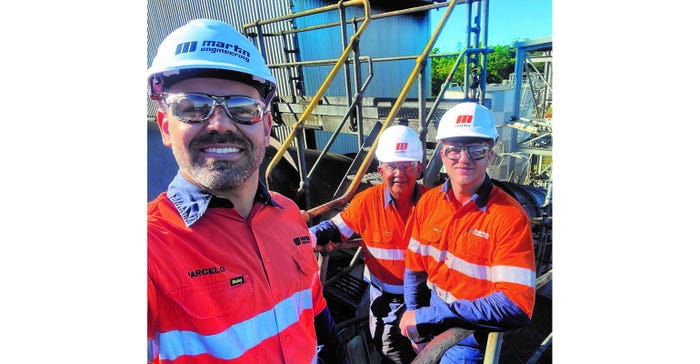The No IRIS Act Was Introduced to Protect Chemical ManufacturersThe No IRIS Act Was Introduced to Protect Chemical Manufacturers
Sen. John Kennedy (R-LA) just introduced the No Industrial Restrictions In Secret (No IRIS) Act to prevent the Environmental Protection Agency from using data from the Integrated Risk Information System (IRIS) to make rules that punish America’s chemical manufacturing industry.

On February 18, 2025, Sen. John Kennedy (R-LA) introduced a new bill to protect the chemical manufacturing industry from punishment over Environmental Protection Agency rules.
The No Industrial Restrictions In Secret (No IRIS) Act would prevent the EPA from using data from the Integrated Risk Information System (IRIS) to make rules that punish America’s chemical manufacturing industry.
The EPA established the IRIS program in 1985 to gather data on how chemicals impact human health. Kennedy said in his press release on the issue, that the EPA designed the system to spot health hazards — not make policy.
“For four years, the Biden administration weaponized the EPA’s IRIS program against America’s chemical industry. My bill would prevent this kind of abuse from happening again and safeguard American businesses from government overreach,” said Kennedy. The IRIS Act bill can be seen here.
The No IRIS Act would prohibit the federal government from using the IRIS to inform its rulemakings unless Congress explicitly authorizes the program.
Rep. Glenn Grothman (R-WI) is leading the companion legislation in the House of Representatives.
The American Chemistry Council (ACC) today commended the bicameral introduction of the No IRIS Act, a significant legislative effort by Senator John Kennedy (R-LA) and Congressman Glenn Grothman (R-WI-06) aimed at promoting sound science and advancing American competitiveness. This landmark act represents a crucial step towards ensuring that regulatory decisions are based on transparent, objective and high-quality scientific evidence, fostering a more competitive and innovative chemical industry in the United States.
ACC has long advocated for policies that support scientific integrity and innovation. The No IRIS Act aligns with these principles by seeking to reform the regulatory environment, reduce unnecessary burdens, and enhance the competitiveness of American chemical manufacturers. The IRIS program has never been authorized by Congress, and since 2009 the program has remained on the GAO’s High- Risk series, which identifies government programs that are vulnerable to fraud, waste, abuse, and mismanagement.
"American success relies on American chemistry," said Chris Jahn, president and CEO of the American Chemistry Council (ACC). “Computer chips, national defense, modern healthcare, housing, infrastructure, agriculture, and energy are all made possible by America’s chemical industry. Unfortunately, the EPA’s IRIS program puts many critical chemistries in jeopardy. The IRIS program has a troubling history of being out of step with the best available science and methods, lacking transparency, and being unresponsive to peer review and stakeholder recommendations. It’s time for Congress and EPA to take action and put sound science at the forefront of regulatory decision-making, and we applaud Senator Kennedy and Congressman Grothman for their leadership on this important issue.”
Jahn shares recent examples of where IRIS assessments have led to controversial regulatory actions:
Formaldehyde Risk Evaluation: The EPA's final risk evaluation under the Toxic Substances Control Act (TSCA) relies on an IRIS value to propose workplace limits that are significantly lower than the recently updated European Union occupational limits. Formaldehyde is a critical chemistry needed for housing, agriculture, transportation, lifesaving vaccines, and national security.
Ethylene Oxide Air Rules: The rules affecting critical industries like energy development, semiconductors, and healthcare rely on an IRIS value that is 23,000 times lower than naturally occurring levels of ethylene oxide in the human body.
IRIS Review of Hexavalent Chromium: EPA’s recent IRIS assessment failed to adequately consider the weight of evidence and may result in drinking water standards which are far lower than the average background levels of naturally occurring hexavalent chromium in groundwater. This could impose massive costs to water systems nationwide with little to no public health benefit.
IRIS Review of Inorganic Arsenic: The proposed IRIS value could be used to drive new regulatory levels for inorganic arsenic that are significantly lower than the background levels of arsenic in soil and water in many states with impacts to soil remediation programs, drinking water standards, crops and other food supplies.
Key Points on the Legislation include:
Competitive Edge: The No IRIS Act will help maintain the US chemical manufacturing sector's trade surplus by ensuring the best available science is the basis for regulations and prevent costly and overly burdensome regulations that could give other countries a competitive advantage.
National Security: By maintaining a strong and innovative chemical sector, the US can avoid supply chain disruptions, protect critical chemistries needed for national security applications, and help ensure continued economic resilience and prosperity.
Economic Impact: The chemical industry is foundational to economic growth and innovation, supporting nearly every corner of the economy from agriculture and national defense to life-saving medical devices and cell phones. The industry is responsible for more than $600 billion in economic impact and supports over 4 million jobs. The act will also help mitigate the cost of living for American families and prevent the outsourcing of high-wage jobs.
Also recently, the Chemical Tax Repeal Act was reintroduced a third time since 2021. The law re-imposed taxes on 42 chemicals, critical minerals, and metallic elements used in common household items such as plastics, rubber, concrete, soap, lightbulbs, and electronics.
The Chemical Tax, aka the Superfund Tax, existed from 1987 to 1995 and was used to mitigate certain contaminated sites around the country.
About the Author
You May Also Like




